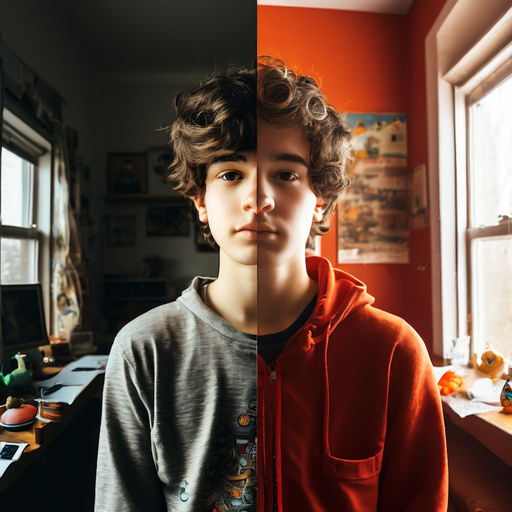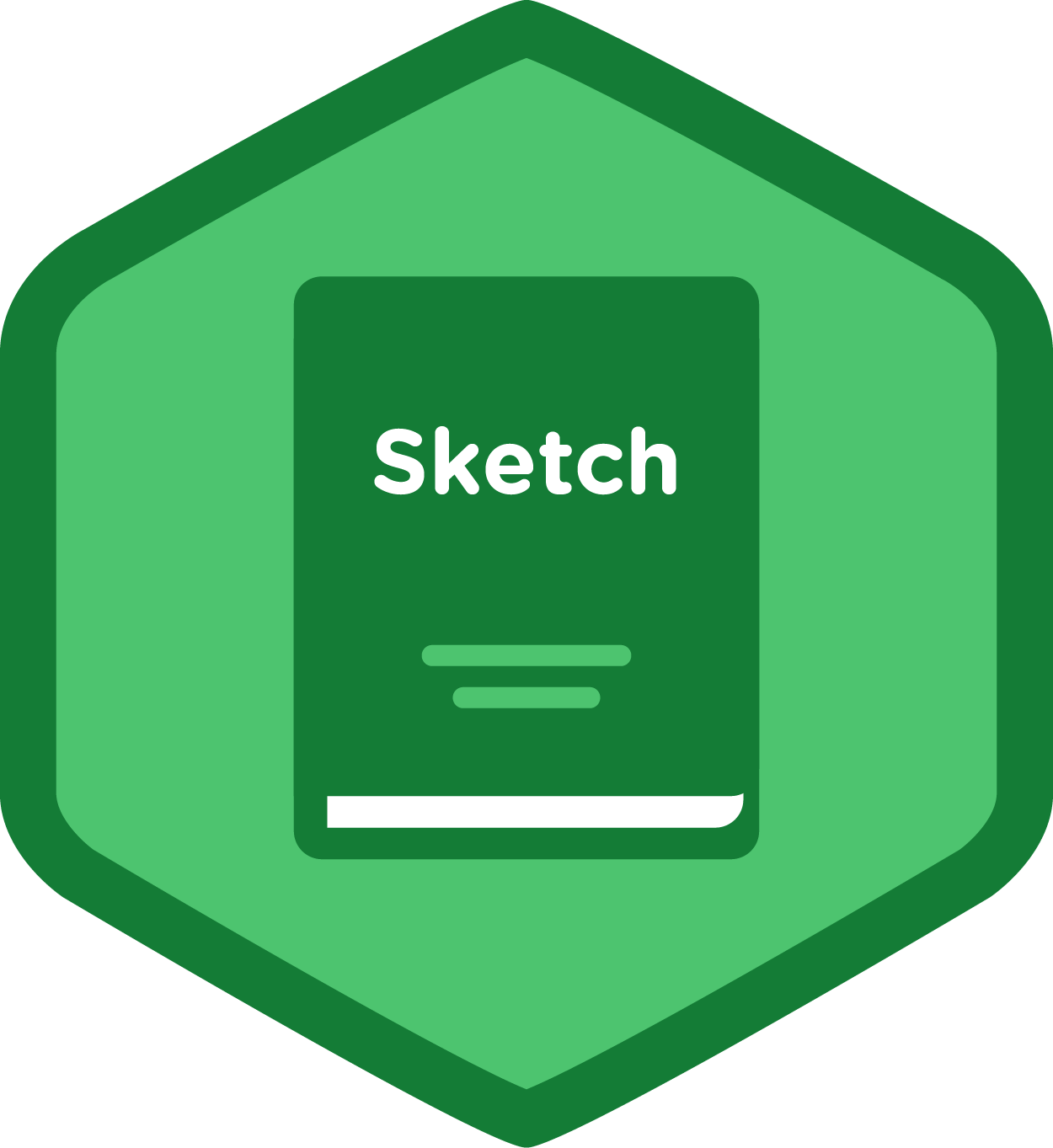Is Sketch Autistic? Unpacking The Question, Debunking Myths, And Understanding The Truth
Ever wondered if Sketch is autistic? The question might sound strange at first, but it’s a topic that’s been buzzing around design communities for years. Sketch, the popular design tool used by millions of creatives worldwide, has sparked debates about its features, usability, and even its "personality." Some users jokingly refer to Sketch as having "quirks" or "traits" that remind them of autistic behaviors. But is there any truth to this? Or is it just a playful way of describing software idiosyncrasies? Let’s dive in and find out.
Sketch, developed by Bohemian Coding, has become a staple in the world of digital design. From UI/UX professionals to graphic designers, everyone seems to have an opinion about it. Some love its simplicity and focus on design, while others complain about its lack of advanced features. This duality has led to some interesting discussions, including the idea that Sketch might be "autistic" in its approach to functionality.
Before we go any further, let’s clarify something: Sketch is not a person, and it doesn’t have feelings or neurological conditions. However, the analogy draws attention to the way Sketch operates—methodically, precisely, and sometimes in ways that feel rigid or overly specific. In this article, we’ll explore the origins of this question, break down the myths, and provide a deeper understanding of both Sketch and autism.
Read also:Fallon Natalie Love Real Name The Untold Story You Need To Know
Here’s what we’ll cover:
- What Does "Is Sketch Autistic" Even Mean?
- Understanding Autism and Its Characteristics
- Sketch’s Design Philosophy: A Match Made in Heaven?
- Common Misconceptions About Sketch
- Why People Compare Sketch to Autism
- Is Sketch Perfect for Everyone?
- Alternatives to Sketch: What’s Out There?
- How to Make the Most of Sketch
- Final Thoughts: Sketch, Autism, and the Future of Design
- Call to Action: Share Your Thoughts
What Does "Is Sketch Autistic" Even Mean?
Let’s start with the basics. When people ask if Sketch is autistic, they’re not literally suggesting that a piece of software can have a neurological condition. Instead, they’re using the term metaphorically to describe certain traits or behaviors they perceive in the program. For example:
- Sketch’s focus on precision and attention to detail.
- Its tendency to stick to a specific set of rules or workflows.
- Its reluctance to adapt to every user’s preferences.
These qualities, while valuable in design, can sometimes feel limiting to users who prefer more flexibility. It’s important to note that this comparison is rooted in stereotypes about autism, which we’ll address later in the article. But for now, let’s explore why Sketch might evoke this analogy in the first place.
Understanding Autism and Its Characteristics
Autism is a neurological condition that affects how individuals perceive and interact with the world. It’s a spectrum disorder, meaning that it manifests differently in each person. Some common characteristics of autism include:
- Strong attention to detail and pattern recognition.
- A preference for routine and consistency.
- Heightened focus on specific interests or tasks.
While these traits can be seen as strengths in many contexts, they can also lead to challenges in social interactions or adapting to new situations. It’s crucial to approach discussions about autism with sensitivity and respect, avoiding harmful stereotypes or comparisons.
Why Sketch Might Seem "Autistic"
Sketch shares some similarities with autistic traits in its design philosophy. For instance:
Read also:Bollyflixto Your Ultimate Destination For Bollywood Entertainment
- It prioritizes precision and accuracy in design.
- It follows a set of predefined rules and workflows.
- It excels in specific areas, such as vector graphics and prototyping.
However, it’s essential to recognize that these qualities are intentional design choices, not inherent flaws. Sketch’s developers have created a tool that caters to a specific audience: designers who value simplicity and efficiency. While this approach may not appeal to everyone, it’s undeniably effective for its target users.
Sketch’s Design Philosophy: A Match Made in Heaven?
Sketch’s design philosophy revolves around minimalism, focus, and efficiency. The developers have deliberately limited the number of features to avoid overwhelming users. This approach has earned Sketch a loyal following among designers who appreciate its streamlined interface and powerful tools.
However, this same philosophy can also frustrate users who need more advanced capabilities. For example:
- Sketch doesn’t support 3D modeling or complex animations.
- It lacks built-in collaboration tools, requiring users to rely on third-party plugins.
- Its file format is proprietary, making it less compatible with other software.
These limitations have led some users to joke that Sketch is "autistic" in its insistence on doing things its own way. But is this really a fair comparison?
Common Misconceptions About Sketch
There are several misconceptions about Sketch that contribute to the "autistic" stereotype. Let’s address a few of them:
- Myth #1: Sketch is too rigid. While Sketch does have a specific workflow, it’s designed to be intuitive and efficient for designers. With practice, users can learn to navigate its features with ease.
- Myth #2: Sketch lacks flexibility. While Sketch may not offer the same range of features as some competitors, it makes up for it with its simplicity and focus on core design tasks.
- Myth #3: Sketch is only for Mac users. While Sketch was originally designed for macOS, it can now be used on Windows through virtualization or cloud-based solutions.
By dispelling these myths, we can better appreciate Sketch for what it is: a powerful tool tailored to the needs of designers.
Why People Compare Sketch to Autism
The comparison between Sketch and autism often stems from a misunderstanding of both the software and the condition. People may use the term "autistic" loosely to describe anything that seems rigid, rule-bound, or unconventional. However, this can perpetuate harmful stereotypes and downplay the lived experiences of autistic individuals.
Instead of labeling Sketch as "autistic," it’s more accurate to say that it’s designed with a specific purpose in mind. Its focus on precision and efficiency is a strength, not a flaw. By framing the discussion in this way, we can avoid reducing complex topics to oversimplified analogies.
Breaking Down the Stereotypes
Here are a few stereotypes about autism that often get conflated with Sketch:
- Autistic individuals are "robotic" or lack creativity. In reality, many autistic people are highly creative and innovative.
- Autistic individuals are "stubborn" or resistant to change. While some autistic people may prefer routine, this is not a universal trait.
- Autistic individuals are "antisocial." In fact, many autistic people crave social connection but may struggle with traditional forms of communication.
By challenging these stereotypes, we can foster a more inclusive and understanding conversation about both Sketch and autism.
Is Sketch Perfect for Everyone?
While Sketch is an excellent tool for many designers, it’s not without its limitations. Here are a few things to consider before adopting Sketch for your workflow:
- Sketch may not be suitable for projects that require advanced features like 3D modeling or animation.
- Its proprietary file format can create compatibility issues with other software.
- Sketch’s reliance on plugins for collaboration can be cumbersome for teams that require seamless integration.
That said, Sketch’s strengths far outweigh its weaknesses for many users. Its intuitive interface, powerful design tools, and active community make it a top choice for designers worldwide.
Alternatives to Sketch: What’s Out There?
If Sketch isn’t the right fit for your needs, there are plenty of alternatives to consider:
- Figma: A cloud-based design tool that offers real-time collaboration and a wide range of features.
- Adobe XD: A comprehensive design and prototyping tool with strong integration with other Adobe products.
- Adobe Illustrator: A powerful vector graphics editor that’s ideal for complex designs and illustrations.
- CorelDRAW: A versatile design suite that offers a wide range of tools for graphic design, illustration, and more.
Each of these tools has its own strengths and weaknesses, so it’s important to choose the one that best aligns with your workflow and goals.
How to Make the Most of Sketch
If you’ve decided to stick with Sketch, here are a few tips to help you get the most out of it:
- Learn the keyboard shortcuts to speed up your workflow.
- Explore plugins and integrations to enhance Sketch’s functionality.
- Join online communities and forums to connect with other Sketch users and share tips.
- Experiment with different templates and resources to streamline your design process.
By mastering Sketch’s features and leveraging its ecosystem, you can unlock its full potential as a design tool.
Final Thoughts: Sketch, Autism, and the Future of Design
So, is Sketch autistic? The answer is a resounding no. While Sketch shares some traits with autistic individuals—such as a focus on precision and consistency—it’s ultimately a piece of software designed to meet the needs of designers. The comparison, while well-intentioned, can perpetuate harmful stereotypes and detract from the real conversation about both Sketch and autism.
As the design industry continues to evolve, tools like Sketch will play a crucial role in shaping the future of creativity. By embracing diversity in both technology and neurology, we can create a more inclusive and innovative world for everyone.
Call to Action: Share Your Thoughts
What do you think about the "is Sketch autistic" debate? Do you love Sketch, hate it, or fall somewhere in between? Share your thoughts in the comments below and let’s continue the conversation!
And if you enjoyed this article, don’t forget to share it with your fellow designers. Together, we can build a better understanding of the tools and topics that matter most in the world of design.
Article Recommendations


